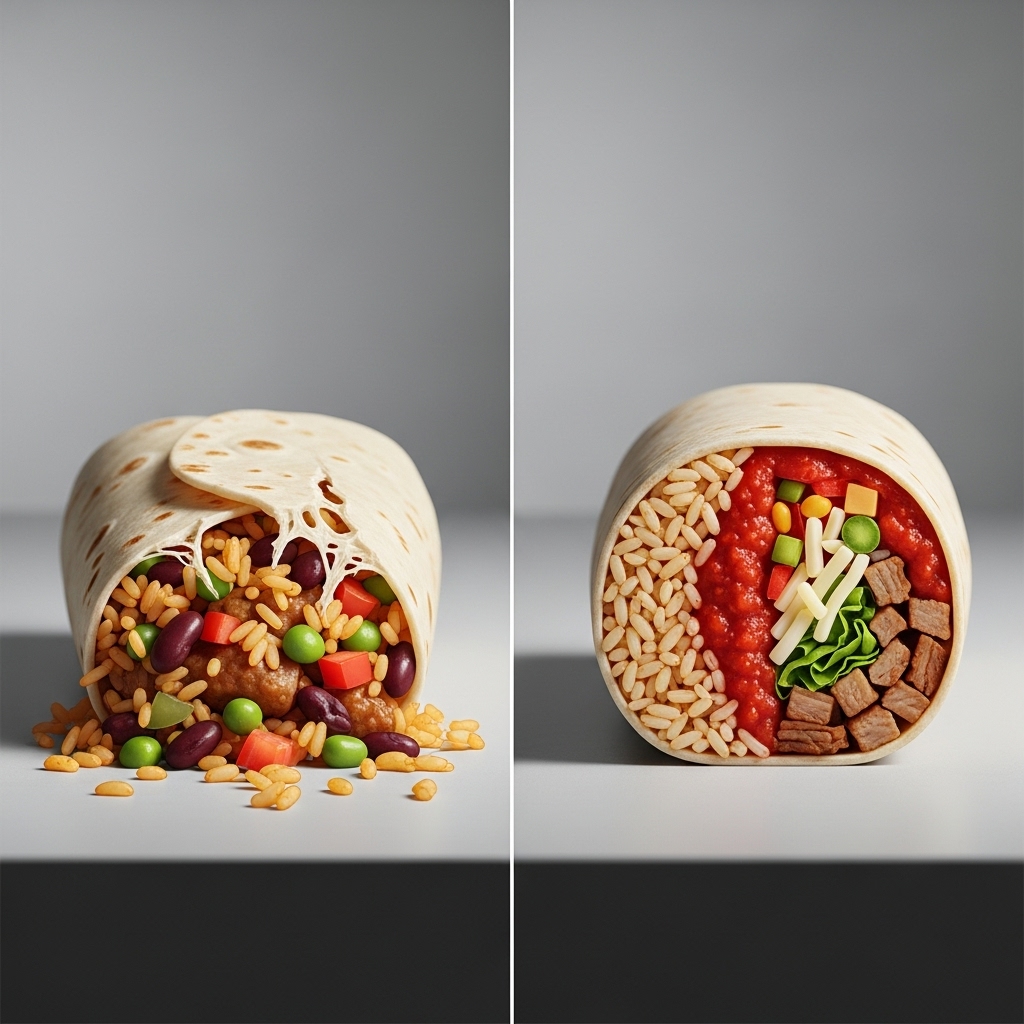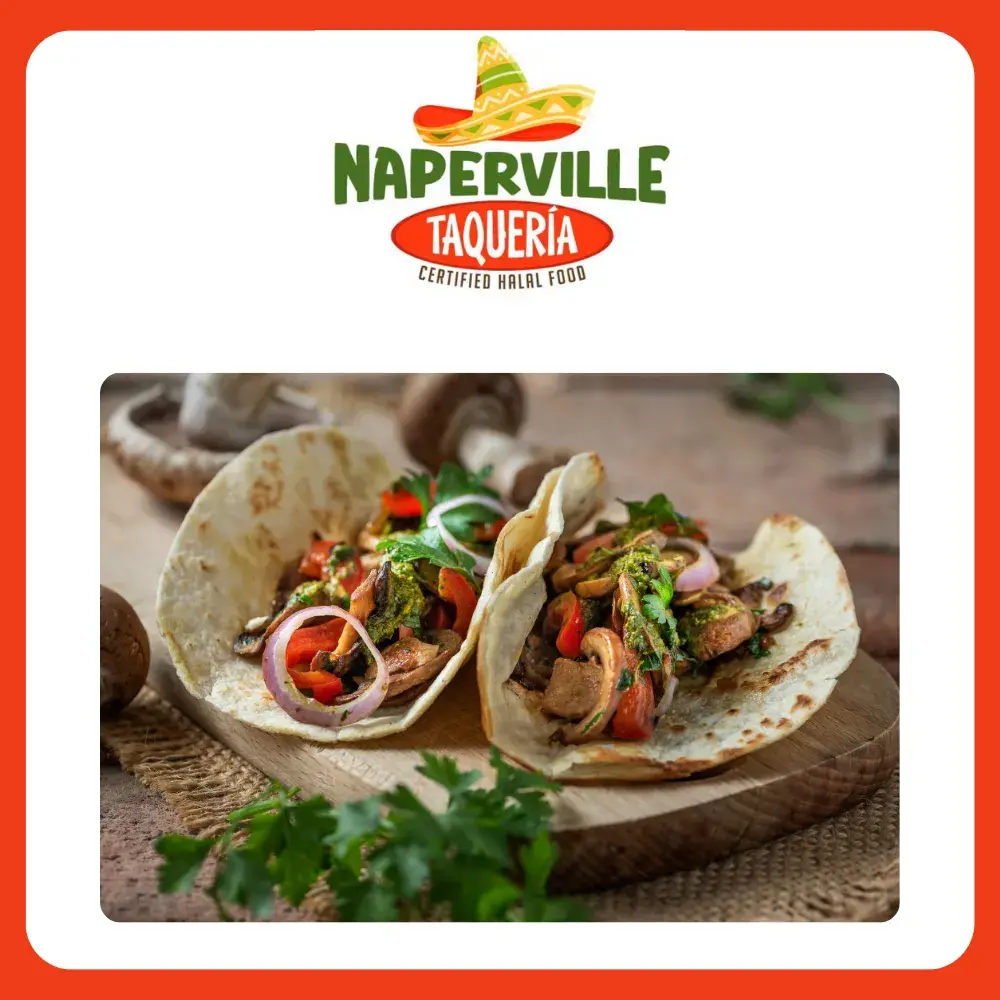In a town that eats on the move as much as Naperville does, the burrito is a trusted companion. It is quick, comforting, and customizable enough to fit just about any routine, from a teacher’s twenty-minute lunch to a family’s Saturday errands. Still, even the best burrito can falter due to a few small missteps. The good news is that most burrito mishaps are easy to fix once you know what is going wrong. After years of grabbing wraps before a stroll along the Riverwalk or between meetings near Washington Street, I have gathered a playbook of simple adjustments that turn a messy meal into a reliable ritual.
The most common mistakes fall into predictable categories: structural issues like tearing tortillas and soggy bottoms, flavor imbalances that drown out key ingredients, temperature problems that lead to lukewarm centers, and ordering habits that complicate what should be the simplest lunch of the week. The solutions are practical and quick, and they will help your burritos travel better, taste brighter, and keep you comfortably full without weighing you down. If you want a clear picture of combinations that already avoid many of these pitfalls, a quick scan of the local menu can guide you toward well-balanced choices.
What follows is a tour through the most frequent burrito missteps I see around town, along with the easy fixes that bring everything back into harmony. Consider it a gentle tune-up for your lunchtime routine.
Overfilling to the point of collapse
It is tempting to say yes to every ingredient, especially when the options are exciting. But stuffing a burrito to bursting is the fastest way to guarantee a blowout. Overfilling prevents a tight roll, and the weak points split open with the first squeeze. The fix is simple: prioritize and layer. Choose a flavor direction for the day—smoky and rich, or bright and fresh—and build toward that. Keep wetter ingredients closer to the center and use rice and beans as a buffer. A burrito that looks modest on the line often eats generously once wrapped because the flavors concentrate.
Another practical trick is to think in terms of texture balance rather than raw volume. You want a mix of soft and crisp, creamy and acidic. When you chase balance, you naturally avoid stuffing every possible add-on into the same wrap, and the structure improves instantly.
Wet ingredients turning the tortilla soggy
Excess moisture is the enemy of portability. Salsas, guacamole, and juicy proteins can soak through a tortilla if they are not balanced by drier elements. Ask for salsa on the side when you know you will be eating on the go. If you want everything inside the wrap, position rice and beans strategically between the sauce and the tortilla so they can absorb extra moisture. A quick sear or steam of the tortilla also helps it become more pliable and resilient.
If you are commuting from downtown to the south side, that small adjustment can be the difference between a burrito that arrives ready to eat and one that needs a rescue. Managing moisture is not about restraint; it is about smart placement.
Tortilla tears and weak seams
Cold tortillas crack. That is burrito physics. A warm tortilla is flexible and seals more readily, which is why a brief steam or toast makes such a difference. When the tortilla is warm, it stretches around the filling rather than snapping along a crease. Proper folding technique matters too: tuck the sides first, then roll tightly while drawing the filling back so it does not surge forward. These small habits create a compact, tidy wrap that travels well.
If you are ordering for a group, mention that the burritos will be on the move. A tighter wrap and a short rest in foil can help each burrito set, so when they are unwrapped at a table in an office off Diehl Road, they hold together like a dream.
Imbalanced seasoning that dulls the experience
Sometimes a burrito tastes flat even when the ingredients are good. The culprit is usually seasoning. Beans need salt to bloom, rice likes a whisper of citrus and cilantro, and proteins benefit from a deliberate marinade or rub. On the flip side, too much salt or heat can drown out nuance. The fix is to use salsas like you would a squeeze of lemon—an accent that wakes everything up—and to season each component with intention rather than dumping spice on top at the end.
Acidity is your friend. A spoon of pico de gallo or a splash of a bright verde salsa can transform a heavy bite into an engaging one. When the seasoning is right, you notice how the beans taste earthy, the vegetables taste sweet, and the protein tastes like itself.
Temperature trouble: cold centers and scorching edges
When a burrito is reheated unevenly, the outside burns before the center warms. If you are eating later, ask for certain components—like extra salsa—on the side and add them after reheating. If microwaving, wrap the burrito in a slightly damp paper towel to help distribute heat more evenly. Allow it to rest for a minute so the temperature evens out. These small steps turn what could be a disappointing second half into a satisfying encore.
For those picking up lunch and facing a drive across town, a well-wrapped burrito in foil maintains heat remarkably well. That passive warmth is often better than an aggressive reheat later, which can dry out the tortilla.
Forgetting the role of texture
Texture keeps each bite interesting. Without it, even tasty burritos feel monotonous halfway through. Crisp cabbage or lettuce, charred corn, and roasted peppers add contrast to softer fillings like beans and rice. Guacamole adds creaminess, while pico contributes a juicy snap. When you include a mix of textures, you eat more slowly and feel more satisfied with less.
Texture also affects portability. Crunchy elements do best shielded from wet ingredients until the last moment. If you are walking to a bench by the Dandelion Fountain, keep the salsa on the side and add it as you go to maintain contrast.
Choosing heat levels that fight the flavor
Heat should complement, not challenge. When spice overwhelms, you lose the interplay of sweet, savory, acid, and smoke. If you love heat, try layering different chiles rather than relying on one blast of fire. Ask for a medium salsa and a dash of a hotter sauce on the side. That way, you can calibrate each bite and preserve the flavors you came for.
On colder days, a slightly deeper salsa can feel comforting. On warmer days, a brighter, citrusy salsa reads as refreshing. Matching heat to weather is a small pleasure that keeps burritos seasonally appealing.
Ordering without a plan
Decision fatigue is real, and at noon it can push you toward throwing everything into the wrap and hoping for the best. A simple plan fixes that. Decide on your base, choose beans, pick a protein that fits your day, and add two or three vegetables. Use salsa like a seasoning, and add guacamole if you want richness. You will get a balanced burrito without overthinking it.
When you feel like experimenting, change one variable at a time. Swap the salsa, try a grilled vegetable you have not had before, or switch the protein. This approach keeps the learning curve gentle while avoiding surprises that lead to regret halfway through lunch.
Ignoring seasonality
Naperville’s seasons shape appetite, and burritos benefit from leaning into that rhythm. In winter, slow-cooked meats, stewed beans, and warm tortillas feel perfect after a windy walk on Chicago Avenue. In summer, grilled vegetables, fresh pico, and a lighter protein hit the spot without slowing you down. When you align your order with the season, the meal tastes better and you are more likely to finish feeling energized rather than sluggish.
Seasonality also means paying attention to produce. Tomatoes sing in late summer; roasted squash comforts in fall. Choosing those ingredients when they are at their best is an easy upgrade.
Not accounting for travel time
Many Naperville lunches involve a drive, a train ride, or a walk outdoors. If your burrito has to travel, build it with that in mind. Ask for cheese to be tucked inside, use rice as a moisture buffer, and keep salsas separate. A slightly tighter wrap is worth requesting when you know the meal will sit for a bit before you dig in.
If you are ordering for a group with staggered meetings, consider bowls for those who will reheat later. The flavors hold and the structure stays clean, reducing the risk of a mid-afternoon mess.
Forgetting the joy factor
It is easy to focus so much on avoiding mistakes that you forget why burritos are beloved: they are fun to eat. The warmth, the aroma, the first bite that tells you what kind of lunch it will be—those little pleasures matter. When you chase balance and pay attention to structure, you preserve those pleasures. Lunch becomes a reset, not a chore.
If you want ideas that already stack the deck in your favor, a quick look at the latest menu often reveals combinations designed to travel well and eat beautifully. Use those as a guide and tweak to your taste.
Putting it all together
When in doubt, keep it simple: warm tortilla, balanced fillings, smart moisture management, and seasoning that brings the best out of each component. If you adopt just a few of these habits, your burritos will feel more reliable and more enjoyable, whether you are eating on a bench by the Riverwalk or at a desk with a stack of emails waiting.
Naperville moves fast, but lunch does not need to be a casualty of that pace. With a little attention, the burrito can be the most dependable part of your day—portable, satisfying, and tailored to the season and the schedule in front of you.
FAQ: Simple fixes for better burritos
How do I prevent a burrito blowout? Avoid overfilling, warm the tortilla, and place wetter ingredients toward the center with rice and beans as buffers. Wrap tightly and let it rest in foil for a minute so the seam sets.
What is the best way to reheat a burrito? Wrap it in a slightly damp paper towel and microwave in short bursts, letting it rest between intervals. Add fresh salsa after heating to preserve brightness.
How can I keep my burrito from getting soggy during a commute? Ask for salsa on the side, request a firm wrap, and use rice as a moisture barrier. Keep the burrito wrapped until you are ready to eat.
How do I make a lighter burrito that still satisfies? Emphasize beans and vegetables, choose a lean protein, and use salsa generously for flavor. Keep guacamole to a reasonable spoonful for creaminess without heaviness.
Where should I start if I am overwhelmed by choices? Pick a balanced base order—beans, moderate rice, lean protein, and bright salsa—and change one element when you want variety. If you need quick inspiration, scanning the current menu will point you toward combinations that are built to travel well and taste great.







